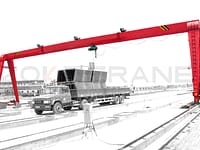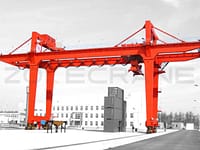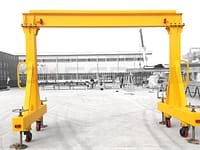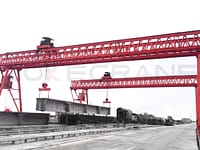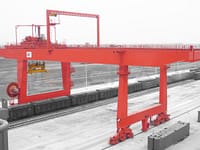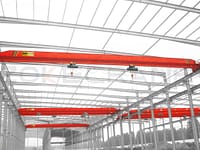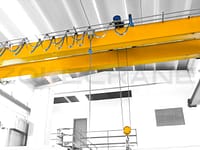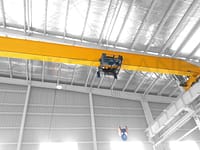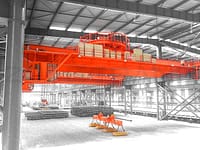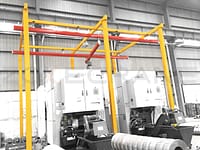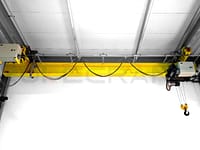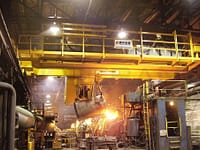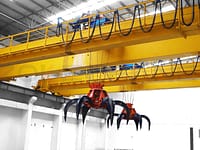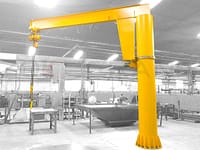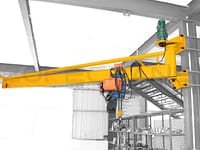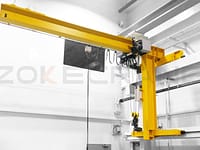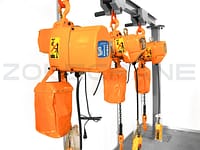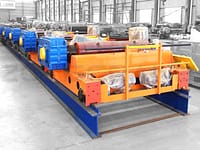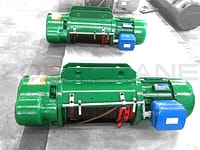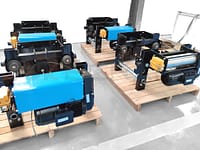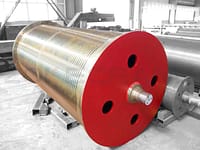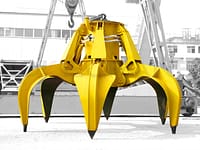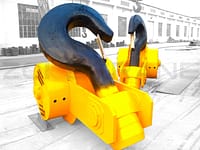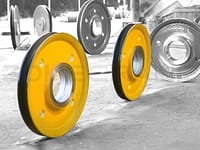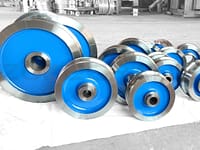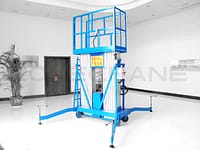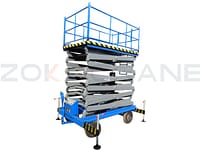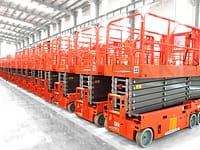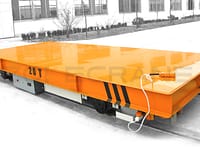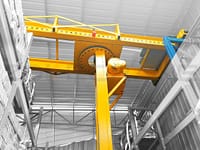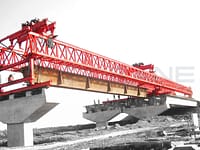The three types of chain hoists are manual chain hoists, electric chain hoists, and pneumatic chain hoists.
Manual Chain Hoists
Manual chain hoists, also known as hand chain hoists or manual chain blocks, are operated by hand and do not require external power sources. They consist of a hand chain, a lifting chain, and a hoist body with gears and a braking mechanism. The operator pulls the hand chain to lift the load, and the load is secured in position by the braking system when the operator stops pulling the chain. Manual chain hoists are commonly used in various industries for lifting and lowering loads in situations where electricity or compressed air is not available or not practical.

Advantages of manual chain hoists:
- Portability: Manual chain hoists are lightweight and portable, making them easy to transport and use in different locations.
- Simple operation: They have a straightforward design and are easy to operate with minimal training.
- Cost-effective: Manual chain hoists are generally more affordable than electric or pneumatic chain hoists.
Disadvantages of manual chain hoists:
- Limited lifting capacity: Manual chain hoists are typically designed for lower lifting capacities compared to electric or pneumatic hoists.
- Requires physical effort: The operator needs to manually pull the hand chain, which can be physically demanding for heavy loads or extended periods of use.
Electric Chain Hoists
Electric chain hoists are powered by electricity and are equipped with an electric motor that drives the lifting mechanism. They consist of a chain, a motorized hoist body, controls, and safety features. The operator controls the lifting and lowering of the load using a pendant control or a remote control. Electric chain hoists are widely used in various industries for lifting heavy loads in manufacturing, construction, warehouses, and other applications.

Advantages of electric chain hoists:
- Increased lifting capacity: Electric chain hoists are capable of lifting heavier loads compared to manual chain hoists.
- Ease of operation: Electric hoists offer precise control and smoother lifting and lowering operations.
- Time-saving: Electric chain hoists can lift loads faster compared to manual hoists, improving productivity.
Disadvantages of electric chain hoists:
- Dependence on electricity: Electric chain hoists require a power source and may not be suitable in situations where electricity is limited or not available.
- Higher cost: Electric chain hoists are typically more expensive than manual chain hoists due to their motorized components.
Pneumatic Chain Hoists
Pneumatic chain hoists, also known as air chain hoists, are powered by compressed air. They use a pneumatic motor to drive the lifting mechanism, which consists of a chain and a hoist body. Pneumatic chain hoists are commonly used in industries where electricity is not preferred or where explosion-proof and hazardous environments exist, such as oil and gas, mining, and chemical industries.
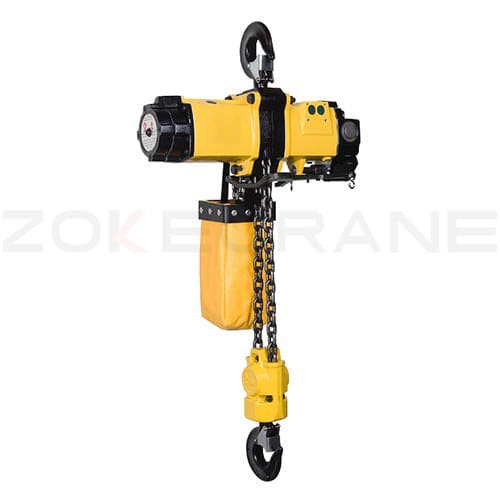
Advantages of pneumatic chain hoists:
- Suitable for hazardous environments: Pneumatic chain hoists are designed to operate safely in potentially explosive or flammable atmospheres.
- Robust and durable: Pneumatic hoists are known for their rugged construction and ability to withstand harsh conditions.
- Variable lifting speeds: They offer adjustable lifting speeds, allowing for precise control based on the application.
Disadvantages of pneumatic chain hoists:
- Dependence on compressed air: Pneumatic chain hoists require a reliable source of compressed air, which may limit their use in some locations.
- Higher cost: Pneumatic chain hoists are generally more expensive than manual chain hoists due to their specialized design and requirements.
Choosing the appropriate type of chain hoist depends on factors such as lifting capacity, power availability, environmental conditions, and specific application requirements.
